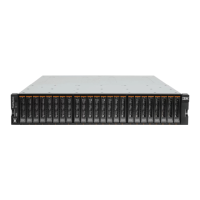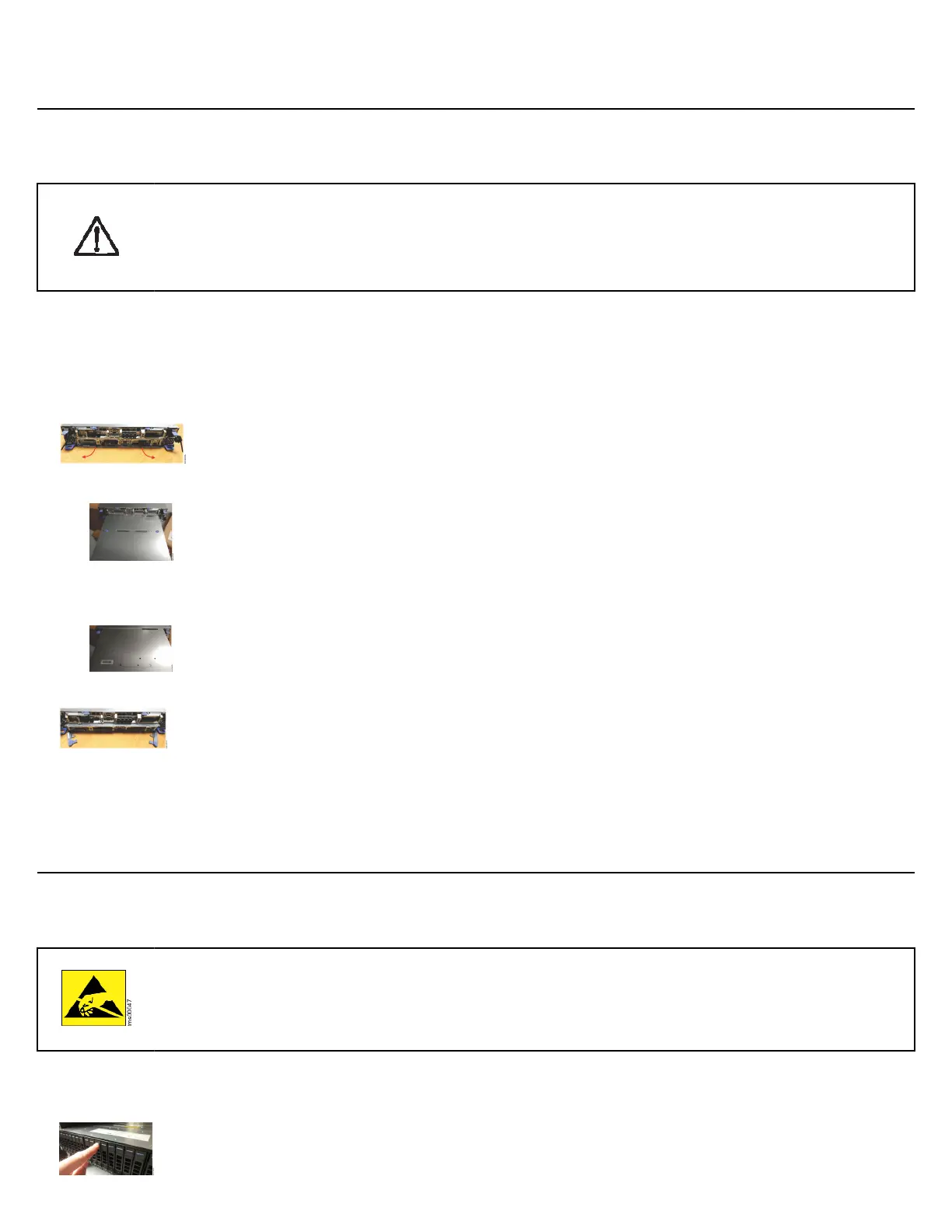Removing and replacing a node canister in the control enclosure
During installation, you need to remove, and then reinstall, the node canisters from the control enclosure.
About this task
CAUTION: This part or unit is heavy but has a weight smaller than 18 kg (39.7 lb). Use care when lifting, removing, or
installing this part or unit. (C008)
• Use care when you remove a node canister from the enclosure. The node canister is long and its center of gravity is far forward. It
can be helpful to have a lift or other sturdy, flat surface ready to receive the node canister during removal.
• No tools are needed to complete this task. Do not remove or loosen any screws.
Procedure
1. To remove the node canister, locate the left and right release levers for the node canister.
On the upper node canister, the release levers are at the top of the control enclosure. On the bottom node canister, the release levers are
at the bottom of the enclosure. The serial number is on a label on the release lever; Step 6 on page 4 shows an example.
2. Pull the left and right levers by the blue ends so that they both unlatch and swing out into an open position, as shown.
3. Use the release levels to slowly pull the node canister and partially extract it from the enclosure.
Warning: Observe safe handling practices as you complete the following steps. The node canister is long and
heavy. Use a lifting platform or other nearby surface to support the node canister as it is extracted from the
control enclosure.
4. Hold the node canister by its sides so that it is level and its weight is balanced. Then, slide the node canister out of the control enclosure.
5. Place the node canister on a flat, level surface; the lid must face up.
Note: The top node canister is inverted; after you remove the top node canister, you must turn it over.
6. To replace the node canister, ensure that both of the canister release levers are in the open position.
7. Push the node canister into the enclosure, ensuring that both release levers engage with the canister and close.
8. Press the release levers closed to fully engage the node canister into the enclosure. Press the latch ends to ensure that the latches are
engaged with the control enclosure.
Removing and replacing a drive
Use the following procedures to remove and replace a drive or an IBM FlashCore Module (FCM) from a node canister.
About this task
• Follow the recommended procedures for handling electrostatic discharge (ESD)-sensitive devices.
• No tools are required to complete this task. Do not remove or loosen any screws during this procedure.
• Every drive slot of an operational control enclosure must contain either a drive or a blank ller. Do not leave a drive slot empty for
more than 10 minutes during servicing.
• IBM FlashCore Modules are not interchangeable with the flash modules in IBM FlashSystem 900 storage enclosures.
Procedure
1. To remove the drive, press the blue touchpoint to unlock the latching handle.
4

